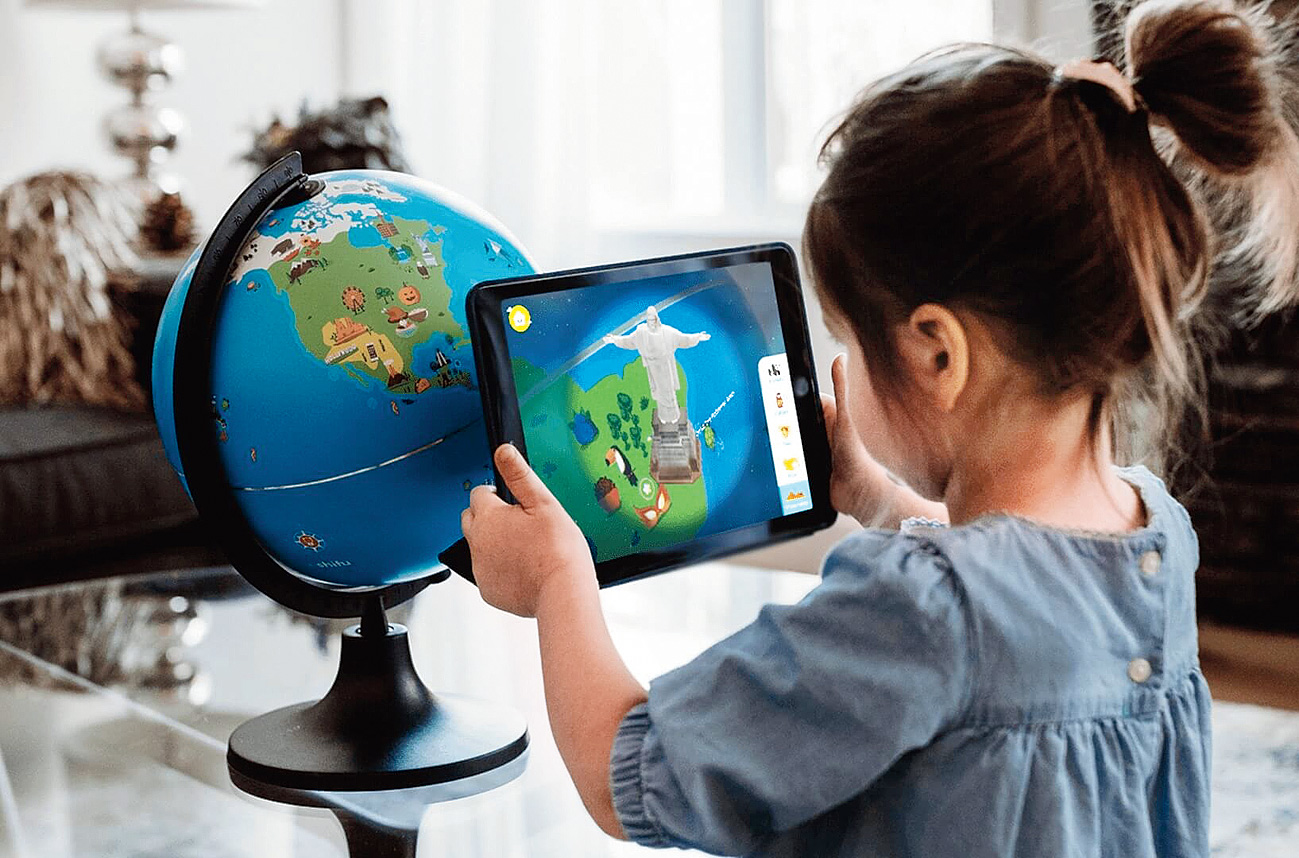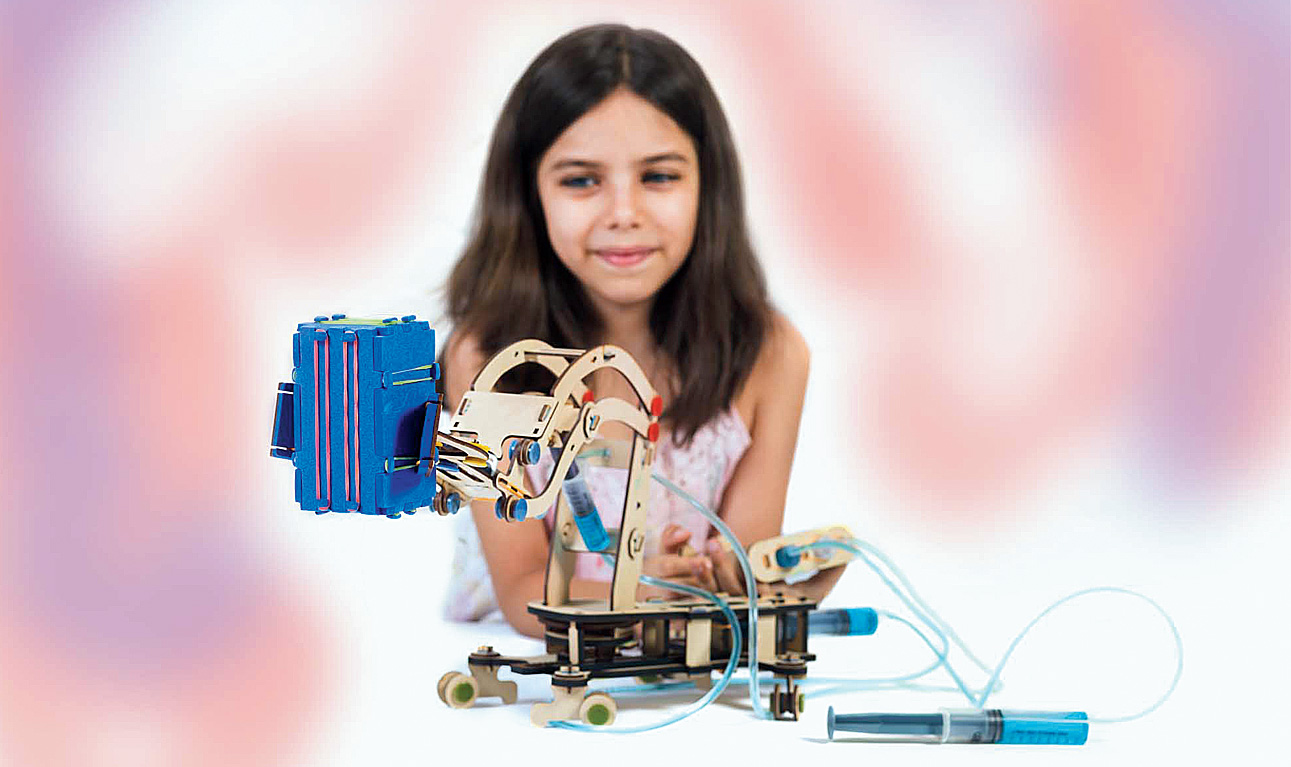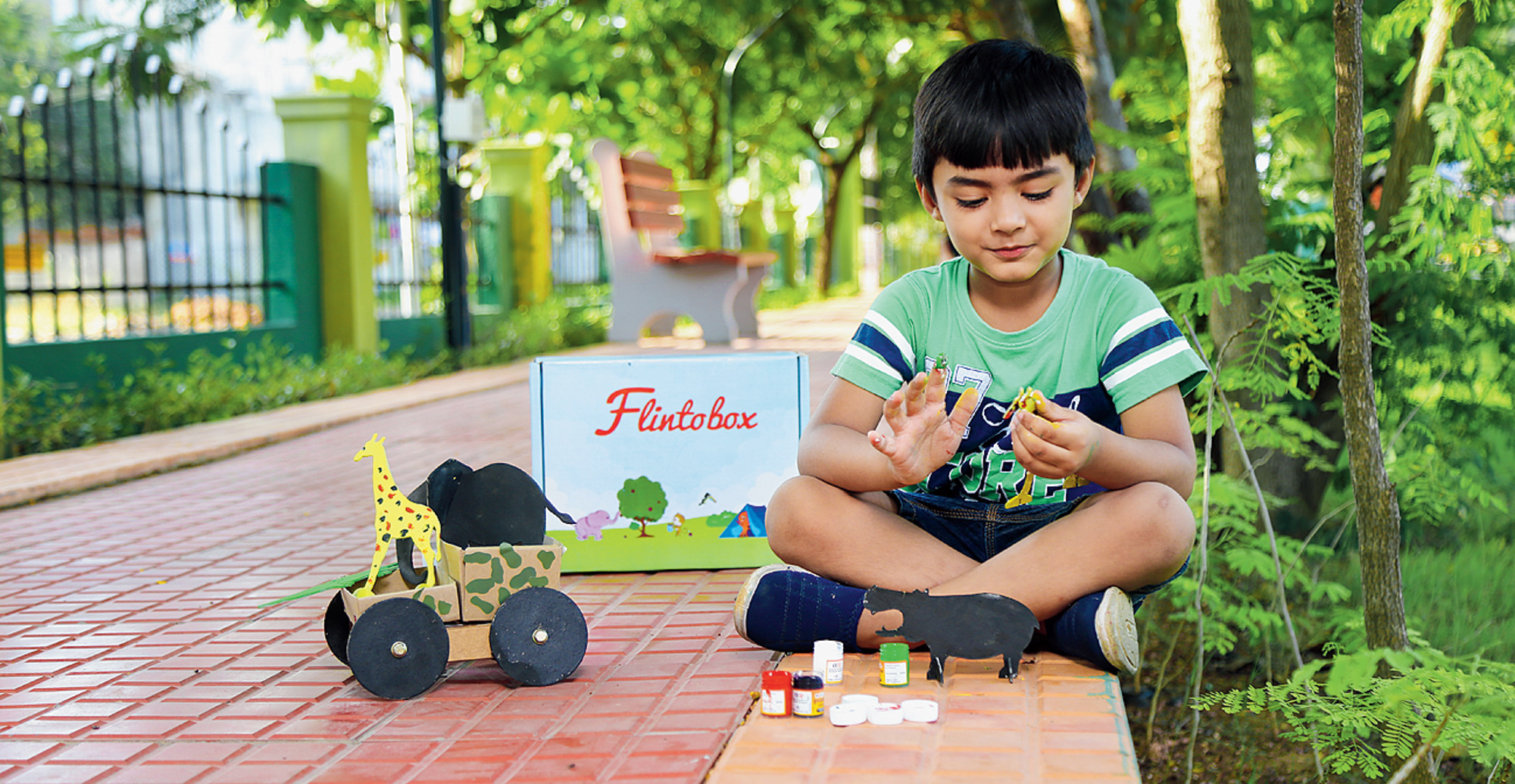A big box with a picture of an orange octopus on it has become familiar among children across India. Inside the box are three to four unique projects that need to be completed within the month and none of them involves any screen. Building a catapult to sand drawing to building a map-based game, there is no dearth of ideas. Once the month is over, another box arrives and then another. Welcome to the world of Flintobox, the Chennai-based start-up, which is playing a unique role among children. t2 connected with Arunprasad Durairaj, CEO and co-founder of Flinto Learning Solutions.
The idea that sparked off a start-up:
In 2013, Vijay (Vijay Babu Gandhi) came to us with a problem that his five-year-old son was spending a disproportionate amount of time in front of screens. Vijay found it very difficult to deviate his son from gadgets and keep him meaningfully engaged as he was juggling between a busy schedule and prioritising his son’s developmental needs. With nuclear families increasing in number, where both the parents go out to work, there’s hardly any time for parents to engage kids meaningfully at home.
Vijay bounced off an idea: If there was someone who could professionally curate toys, activities, and books, it would be a huge benefit for parents and could cause a lasting impact on a child’s life.
We all loved that idea as we were also young parents facing similar situations and we personally experienced the lack of quality education in India. This encouraged our team to take the plunge and build Flintobox as a company.
The three co-founders:
Vijay, Shreenidhi SP and I have been friends for more than 10 years now. We have a common first employer: Tata Consultancy Services. All of us had a passion for early learning and quit our jobs at the same time and started Flinto in October 2013.
Coming up with the theme for the month:
At Flinto, it’s always the child first. This means that every theme and every single activity in it is designed keeping in mind the child’s age, uniqueness and development. We have a team of child psychologists, educational experts, game developers and material engineers who research on age-appropriate learning tools to come up with the best themes that provide the right balance of fun and learning every month.
It’s present across age groups:
Flintobox has a customer base of five lakh parents across India. Beginning with creating boxes for the age group of four-to-eight-year-olds, we have expanded to a wide range of activities, starting from the age of two and going right up to 12 years. Higher levels of satisfaction result in parents sticking with Flintobox for a longer time. And this helps in word-of-mouth publicity as they recommend Flintobox to other parents who are in need. The word-of-mouth publicity stands as a testimony to how well Flintobox addresses the parenting challenge of engaging a child meaningfully at home.
In addition to the nuclear family set-up where both the parents are working, who don’t have time to engage their children constructively, these parents are also aware of the rise in serious issues concerning children, like addiction to TV and dangerous online games. Parents today waste no chance in grabbing the solution to such problems if it is readily available in the market.
Enter FlintoClass:
In a country with a billion population, the rate of penetration of early education is only an abysmal 15 per cent. This fuelled us to create an opportunity to positively impact children’s early years across different mediums of learning. And that’s how we entered the preschool market and started FlintoClass, which is a comprehensive preschool system that ships everything needed to run a world-class preschool to the subscriber’s doorstep month on month.
FlintoClass removes teacher dependency and provides well-researched, ready-to-use learning tools to provide high-quality education to children. This unique package standardises early education in such a way that a child learning in a state-of-the-art school or even under a tree gets the same learning experience. It helps educators, irrespective of their experience and background, to deliver a world-class learning experience to children.
In the international market:
Apart from India, we have spread our wings to countries like Malaysia, Laos, Singapore, Qatar, the UAE, Kuwait and Indonesia. We also aim to reach out to more countries to make early education accessible to all children around the world.
Three-month subscription: Rs 2,235
Six-month subscription: Rs 3,870
Twelve-month subscription: Rs 6,540

PlayShifu PlayShifu
It’s a globe but one can explore the world beyond boundaries. The magic of Shifu Orboot is powered by augmented reality. Point the phone or tablet on the globe and an app will tell the kids a lot about a place. Yes, technology can be a good thing and Bangalore-based PlayShifu is on a mission to prove it. We emailed Vivek Goyal, CEO and co-founder of PlayShifu, an augmented reality learning platform for children.
Lift-off moment:
Dinesh (Advani) and I are both parents. We came to understand that a child’s brain development in the early years is centred around play and entertainment. But today, both these elements are centred around screens (mobiles, tablets and laptops). And that’s when it hit us, what if screen time became more hands-on? It’ll open up unlimited possibilities to merge learning and play. We designed flashcards and mix-and-match wooden toys that come to life with augmented reality.
Next came our bestseller (yet), Shifu Orboot, which won the hearts of children, parents, and educators from more than 60 countries. The idea of Orboot was born in a teatime conversation. We were reminiscing our childhood and all the games we played. From hide-and-seek to snakes and ladders, we could count tens of games, both indoor and outdoor. Then from our rusty memories lit up the good old globe, one of the very first educational tools we ever had. We rolled up our sleeves and took upon the task of “toyfication” of the globe to make it an interactive, must-have tech-toy. Shifu Obroot is the first AR globe that can literally take you on a virtual tour of the world. It is packed with layers of enriching information on countries, cultures, monuments, wildlife and hundreds of other fun facts that come to life.
Benefits of AR:
The power of AR lies in making every theory lesson interactive and immersive. AR helps in visualising content inside out, which can be customised to suit the learning needs of each student. This way, education truly becomes inclusive and flexible, in every sense of the word.
AR is not limited to higher-level applications. It can be integrated into the elementary levels of learning too. All you need is a smart device (smartphone or tablet). One could use resources like AR flashcards to teach grade one students about animals. Scan the flashcard and let children interact with the content — what animals eat, what are the sounds they make, where do they live and so much more.
Instead of just creating diagrams to understand the human body, use AR to scan the drawings to see them functioning. For instance, learn about your heart with the help of a 3D model and watch how it pumps blood to and fro.
My personal nightmare in school — the periodic table in chemistry can be understood with real-life images using AR. Use 3D atoms and molecules to explain the chemical interaction and how atoms make bonds or repel other atoms because the chemistry lab cannot simulate learning at the atomic level. Many teachers have ‘gamified’ their classrooms using AR technology; creating challenges and quests instead of homework assignments and projects. This process of learning ensures instant feedback, visualisation and a self-manipulated experience for every individual child.
We are working on an array of games and features for our latest product, Shifu Plugo — an AR-based STEM gaming system. It combines five different gaming kits with one Gamepad and one companion app. Each gaming kit is about a unique physical interaction used to solve puzzles that the app throws. Parallelly, the team is also focused on new toys and games that we can’t discuss yet.
Connected toys and privacy issues:
We understand that privacy is one of the topmost concerns when it comes to connected toys. But we believe that it shouldn’t be the concern of kids. Parents can take care of privacy concerns while handing over apps and devices to their children so that the play experience is focused and fun for them. We ensure this with all of our toys, and we are happy to say that none of PlayShifu toys and games need an Internet connection after the initial one-time set up.
A few milestones:
We started our journey in mid-2016. There is a lot more we want to accomplish in the coming years, and the most important of all is to reach one million homes by the end of 2020. Our first taste of international success when Orboot was backed by people from 60 countries on Kickstarter. Later when they received the final product, almost 50 per cent of them wrote back to us the same day, lauding the experience Orboot presents. They expressed their profound joy watching their kids fall in love with Orboot almost instantly.
Rs 299 to Rs 2,499

Smartivity Smartivity
Making a kaleidoscope, a gear propeller flying machine or a giant wheel can be fun. Based in New Delhi, Smartivity is known for STEM-based educational toys and has made several international showcasings. t2 caught up with Tushar A. Amin, co-founder of Smartivity to find out more.
The idea:
Smartivity is founded on a few core beliefs that we (co-founders and the Smartivity team) share. We believe in the power of play. Children learn the best through play as playing gives them the freedom to explore, make mistakes and discover concept on their own. As opposed to rote learning, learning through play ensures longer retention and practical applications of critical concepts learnt. We also believe in the promise of STEM [Science, Techonolgy, Engineering, Math (and Arts)] fields. The world in which today’s children will live, will be shaped by these subjects, and a thorough grounding in STEM concepts would be critical. And most importantly, we believe in the potential of every child to be a ‘future maker’. The future will be driven by those who make, rather than those who only consume.
Working with STEMNinjas:
The starting point for any design from Smartivity is a real-life concept from science, technology, engineering or math. But we are not a school. We do not want our products to be homework or chore for children. We want children to have fun. Hence, once we choose a concept, we get to work on exploring the most fun gameplays that we can build around the concept. So core STEM concepts and the most fun gameplay are the two pillars of any product idea. Once we have arrived at this balance, we design prototypes. This is then presented to our advisors (teachers, parents), and more critically, to our STEMNinjas — this is a group of children who are part of our design process from prototype stage. Once the product is approved by STEMNinjas, it is ready for production based on our business calendar.
Escaping the screen
If there is something more exciting, children love to engage themselves thoroughly. They take great pride in making. But are there options that challenge their minds? So why blame children? Even adults find an escape in screens. We believe that there is only one way to lure a child away from a screen. And that is to design products that are the right balance of challenging, exciting and rewarding. We include children in our product design process so that we understand their needs. This helps us focus on inspiring a child with products that are so engaging and cool that once they start, they are so immersed in the experience that they do not even think of any other distraction.
International showcasings:
We have been showcasing our unique and innovative designs at the biggest toy trade fairs in the world for the past three years, be it in Nuremberg, Germany, Hong Kong or the US. Given our nature as a start-up, we do not have huge marketing budgets. So we use trade fairs as platforms to showcase our innovations globally. This has helped us extend our reach to some of the most discerning and demanding markets in the world.
Our biggest challenge is that being a retail brand, we do not have a direct connect with our customer through traditional channels. We are solving this through our marketing initiatives on social media and through on-ground activations. We have a very strong social media presence, and we collaborate with malls, toy stores like Hamleys and activity centres to conduct Smartivity STEM workshops in most cities during holidays.
The team:
I met Apoorv (Gupta) at a birthday party of a friend’s daughter. That is where our journey began. Ashwini (Kumar) and Rajat (Jain) are Apoorv’s batchmate from IIT, Delhi. Ashwini was also Apoorv’s flatmate. So I met Ashwini and Rajat through Apoorv. We all share the same beliefs, and want to make a difference in the lives of millions of children by inspiring them to become makers through our designs. That is our sole objective.
The next step:
Integration with Arduino (an open-source hardware and software company that designs and manufactures single-board microcontrollers and microcontroller kits for building digital devices and interactive objects) processor-based controllers is the logical next step in our product evolution. However, we do not want to make our products inaccessible in terms of price point for the parent. More critically, we do not want to create anything that becomes a boring chore or homework for a child. Most coding-based products are built without understanding children’s need for continuous playful engagement. There are many processor-based kits in the market, but all of them resemble laboratory equipment, not a toy. They also demand a lot of drive from a child, as they are not fun, but academic. So we are working on a range that address these gaps by doing what we do best — adding Smartivity magic to these tools.
Rs 399 to Rs 2,999











